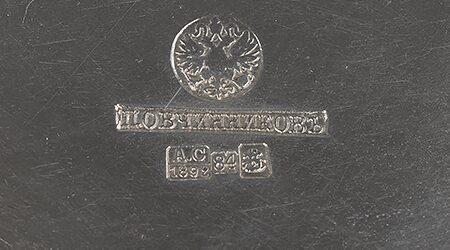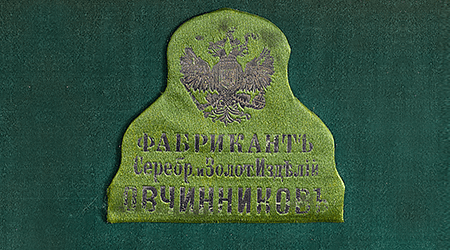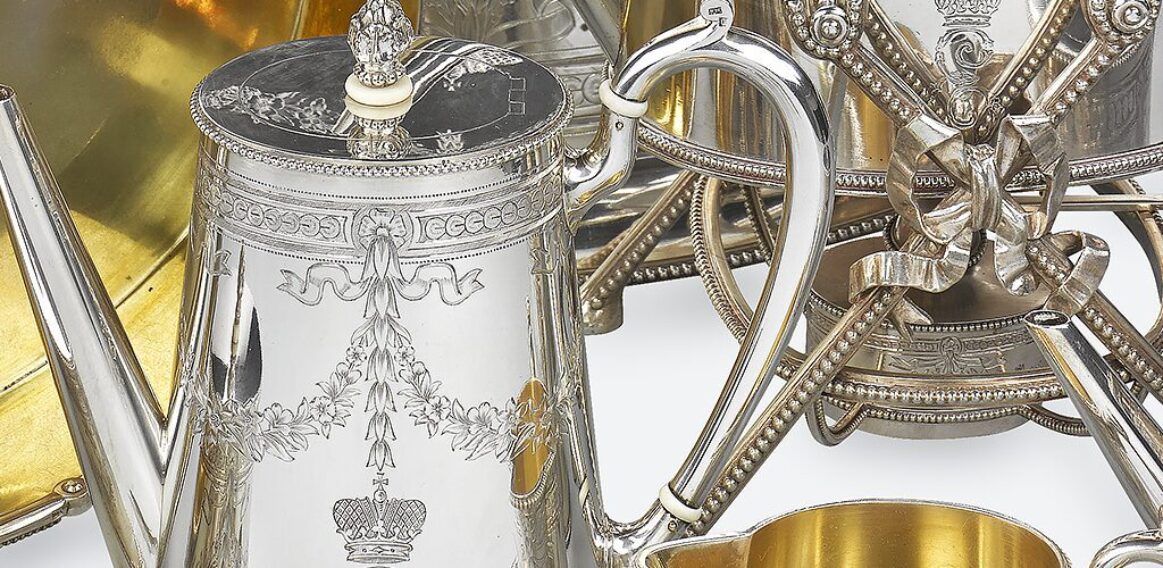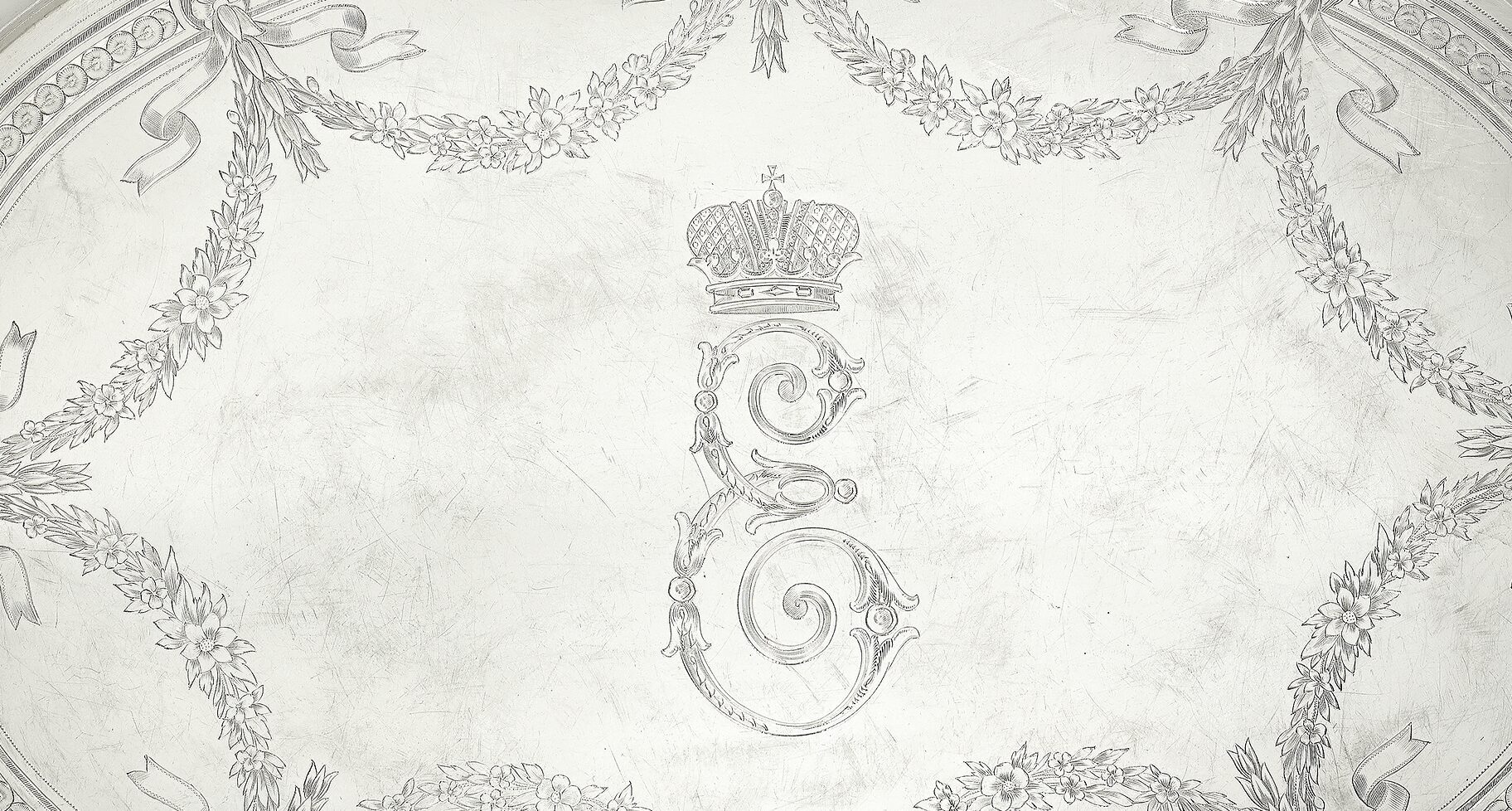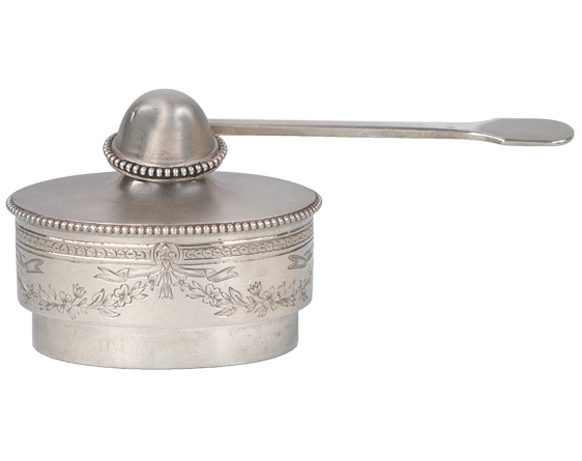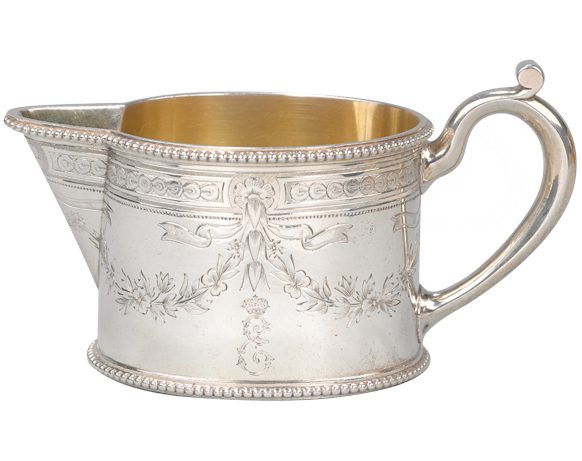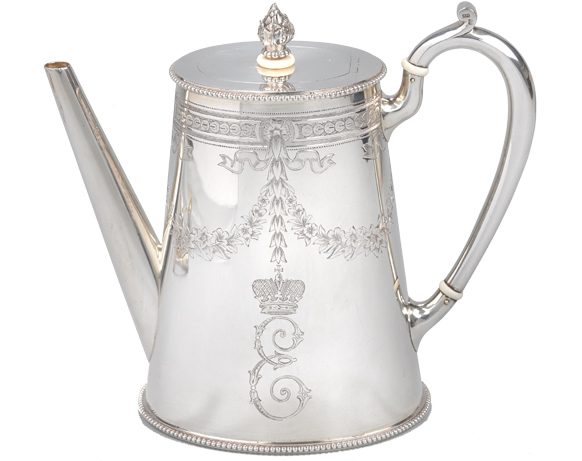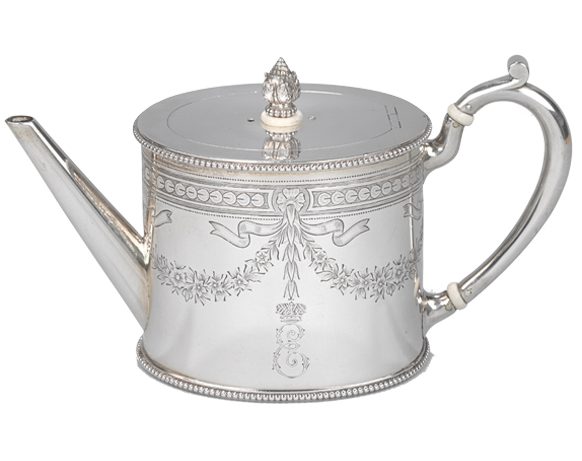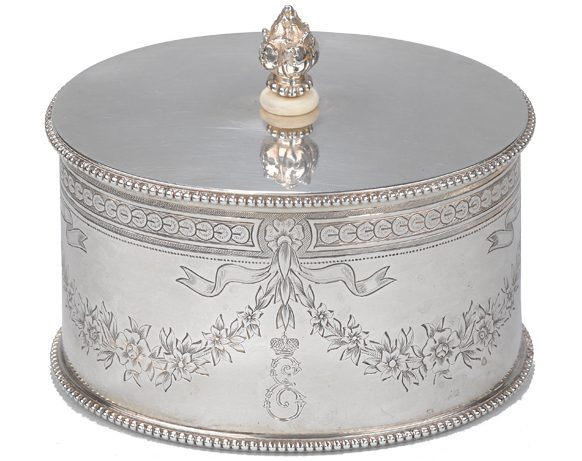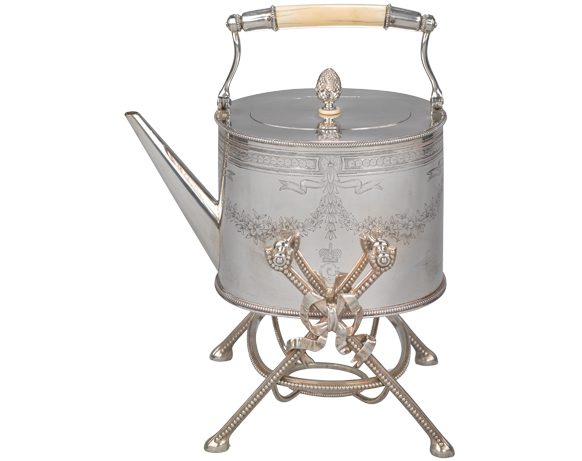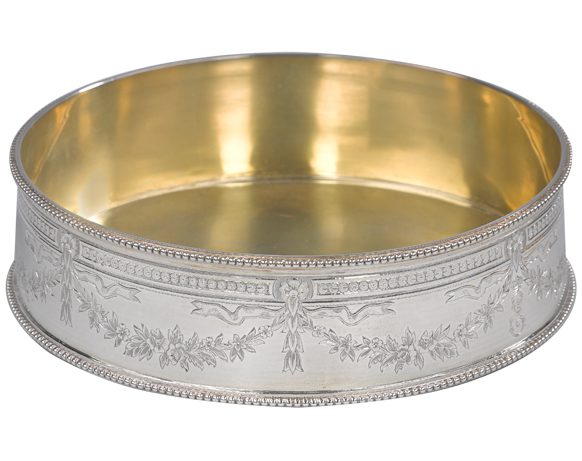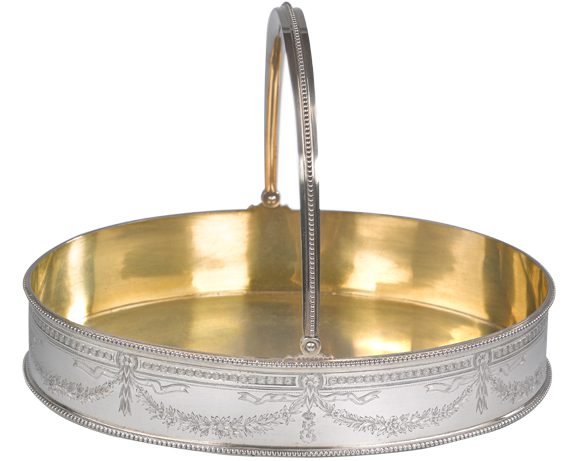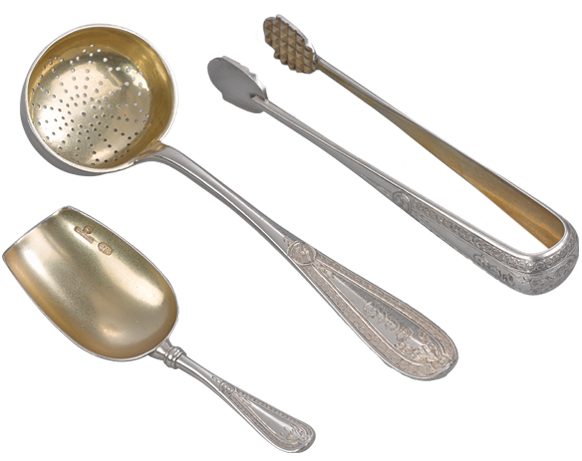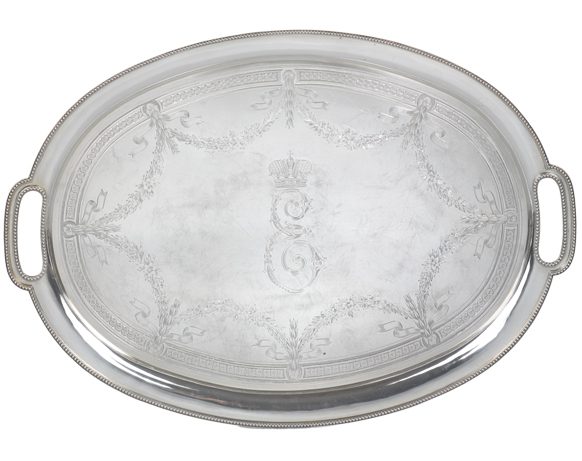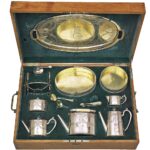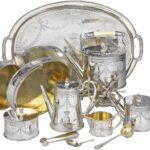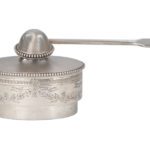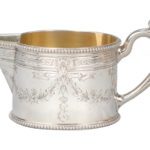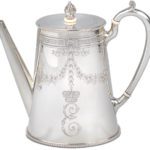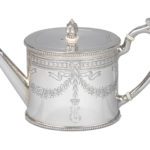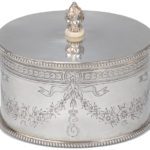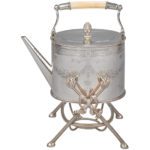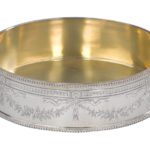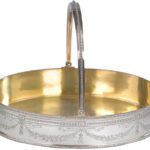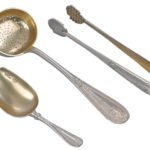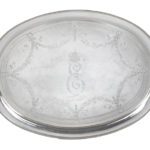Provenance
Presented to Grand Duchess Elena Vladimirovna (1882-1957) on the occasion of her wedding at Tsarskoye Selo on 29 (16) August 1902
An important Russian Imperial presentation silver tea and coffee set by Pavel Ovchinnikov. The set belonged to Grand Duchess Elena Vladimirovna (1882-1957). Her collection was one of the few Russian aristocratic collections which escaped the Revolution intact. It was presented to her Highness by a group of high-ranking courtiers on the occasion of her wedding to Prince Nicholas of Greece and Denmark (1872-1938) in 1902.
Each piece is engraved with the Duchess’s cypher – initial ‘E’ below the Russian Imperial crown, further decorated with Louis XVI style ribbon-tied floral garlands. The set comprises a hot water kettle with stand and burner, tea pot, coffee pot, creamer, sugar bowl, biscuit tray, cake basket, all contained in its original fitted oak case; the lid of the case is applied with a brass plaque engraved with the Duchess’s cypher. The reverse of the tray is engraved with the names of the original presenters of the set and the date when the gift was made:
S.A. Arapova / J.O. von Peters / S.P. Durnovo / M.F. Mansurova / A.S. Istomina / G.R. Vasmund / Prince M.M. Golitsyn / Count M.P. Fersen / I.L. Tatishchev / Prince S.K. Beloselsky—Belozersky / A.A. Belyaev / Count M.N. Grabe / Count B.E. Stakelberg / A.S. Etter / August 16, 1902
Grand Duchess Elena was the only daughter and youngest child of Grand Duke Vladimir Alexandrovich and Grand Duchess Maria Pavlovna, cousin of Tsar Nicholas II and granddaughter of Tsar Alexander II. She was known as one of the greatest beauties of her time; in his memoirs, Prince Felix Yussupov recalled: ‘[her] beauty fascinated me. She had the loveliest eyes imaginable, and everyone fell under their charm‘ (F. Yussupov, Lost Splendour). Prince Nicholas first proposed in 1900, but Elena’s parents were initially opposed to the match: as the third son, Nicholas had no real fortune or prospects of inheriting a throne. Nevertheless, two years later the couple were finally permitted to marry. The ceremony took place in the palatial church of the Catherine Palace at Tsarskoye Selo, the Imperial summer residence near St. Petersburg, and was conducted with great pomp. The marriage proved to be a very happy one, although the couple had to endure the untimely deaths of many family members and long years of exile. The couple had three daughters, all of whom shared their mother’s good looks. Princess Marina, the youngest, went on to marry George, Duke of Kent. Prince Nicholas and Princess Elena spent their last years in exile in Paris where Nicholas took up painting and Elena worked for various children’s charities.
Ovchinnikov, alongside with Fabergé, was one of the most important silver- and goldsmith of nineteenth-century Russia. The firm’s production was highly praised by many other European royal courts. Ovchinnikov was appointed official purveyor to Tsar Alexander III and the Imperial Russian Court, King Victor Emmanuel II of Italy, Grand Duke Mikhail Nicholayevich, and King Christian IX of Denmark. The firm’s work was featured in numerous exhibitions around the world and received several prestigious awards.
